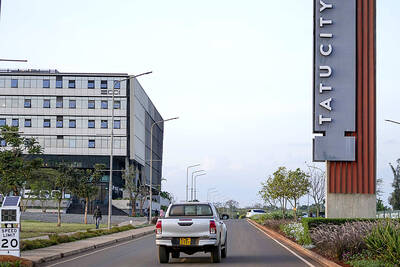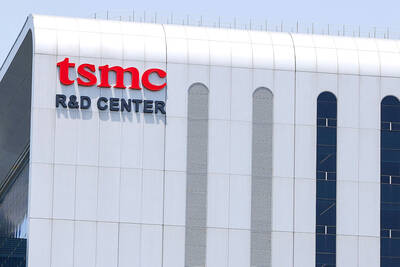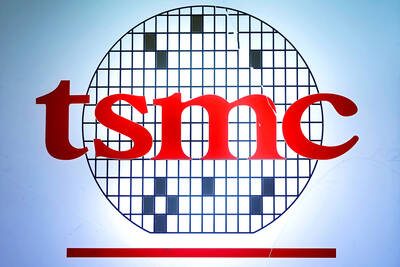The US unemployment rate jumped to 8.5 percent last month, the highest since late 1983, as a wide range of employers eliminated a net total of 663,000 jobs.
The Labor Department’s report is fresh evidence of the toll the recession has inflicted on the US’ workers and companies. Most economists expect the job cuts will continue for much of this year.
The latest tally of job losses, released yesterday, was slightly higher than the 654,000 that economists expected. The rise in the unemployment rate matched expectations.

PHOTO: AFP
Since the recession began in December 2007, the economy has lost a net total of 5.1 million jobs, with almost two-thirds of the losses occurring in the last five months.
The number of unemployed people climbed to 13.2 million last month.
In addition, the number of people forced to work part time for “economic reasons” rose by 423,000 to 9 million. That’s people who would like to work full time but whose hours were cut back or were unable to find full-time work.
If part-time and discouraged workers are factored in, the unemployment rate would have been 15.6 percent last month, the highest on records dating to 1994.
Looking forward, economists expect monthly job losses continuing for most — if not all of — this year.
However, they are hoping that payroll reductions in the current quarter won’t be as deep as the roughly 685,000 average monthly job losses in the January-March period.
Even if the recession ends this year, the economy will remain frail, analysts said. Companies will have little appetite to ramp up hiring until they feel the economy is truly out of the woods and any recovery has staying power.
Given that, many economists predict the unemployment rate will reach 10 percent at the end of this year. The Fed says unemployment will remain elevated into 2011.
Economists say the job market may not get back to normal — meaning a 5 percent unemployment rate — until 2013.
“There’s going to be quite a long haul before you see the jobless rate head down,” said Bill Cheney, chief economist at John Hancock Financial Services.
This week, 3M Co, the maker of Scotch tape, Post-It Notes and other products, said it was cutting another 1,200 jobs, or 1.5 percent of its work force, because of the global economic slump.
Fewer than half the jobs will be in the US, but include hundreds in its home state of Minnesota. The 1,200 figure includes cuts made earlier in the first quarter.
Elsewhere, healthcare products distributor Cardinal Health Inc said it would eliminate 1,300 positions, or about 3 percent of its work force, and semiconductor equipment maker KLA-Tencor Corp said it would cut about 600 jobs, or 10 percent of its employees.

To many, Tatu City on the outskirts of Nairobi looks like a success. The first city entirely built by a private company to be operational in east Africa, with about 25,000 people living and working there, it accounts for about two-thirds of all foreign investment in Kenya. Its low-tax status has attracted more than 100 businesses including Heineken, coffee brand Dormans, and the biggest call-center and cold-chain transport firms in the region. However, to some local politicians, Tatu City has looked more like a target for extortion. A parade of governors have demanded land worth millions of dollars in exchange

An Indonesian animated movie is smashing regional box office records and could be set for wider success as it prepares to open beyond the Southeast Asian archipelago’s silver screens. Jumbo — a film based on the adventures of main character, Don, a large orphaned Indonesian boy facing bullying at school — last month became the highest-grossing Southeast Asian animated film, raking in more than US$8 million. Released at the end of March to coincide with the Eid holidays after the Islamic fasting month of Ramadan, the movie has hit 8 million ticket sales, the third-highest in Indonesian cinema history, Film

BIG BUCKS: Chairman Wei is expected to receive NT$34.12 million on a proposed NT$5 cash dividend plan, while the National Development Fund would get NT$8.27 billion Taiwan Semiconductor Manufacturing Co (TSMC, 台積電), the world’s largest contract chipmaker, yesterday announced that its board of directors approved US$15.25 billion in capital appropriations for long-term expansion to meet growing demand. The funds are to be used for installing advanced technology and packaging capacity, expanding mature and specialty technology, and constructing fabs with facility systems, TSMC said in a statement. The board also approved a proposal to distribute a NT$5 cash dividend per share, based on first-quarter earnings per share of NT$13.94, it said. That surpasses the NT$4.50 dividend for the fourth quarter of last year. TSMC has said that while it is eager

‘IMMENSE SWAY’: The top 50 companies, based on market cap, shape everything from technology to consumer trends, advisory firm Visual Capitalist said Taiwan Semiconductor Manufacturing Co (TSMC, 台積電) was ranked the 10th-most valuable company globally this year, market information advisory firm Visual Capitalist said. TSMC sat on a market cap of about US$915 billion as of Monday last week, making it the 10th-most valuable company in the world and No. 1 in Asia, the publisher said in its “50 Most Valuable Companies in the World” list. Visual Capitalist described TSMC as the world’s largest dedicated semiconductor foundry operator that rolls out chips for major tech names such as US consumer electronics brand Apple Inc, and artificial intelligence (AI) chip designers Nvidia Corp and Advanced